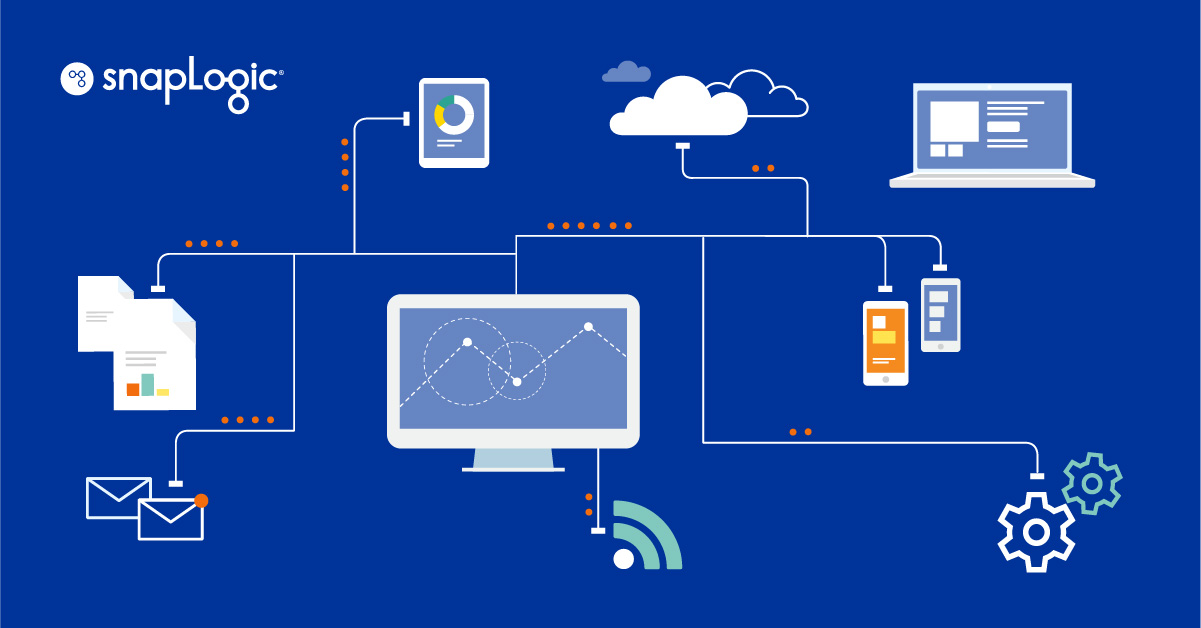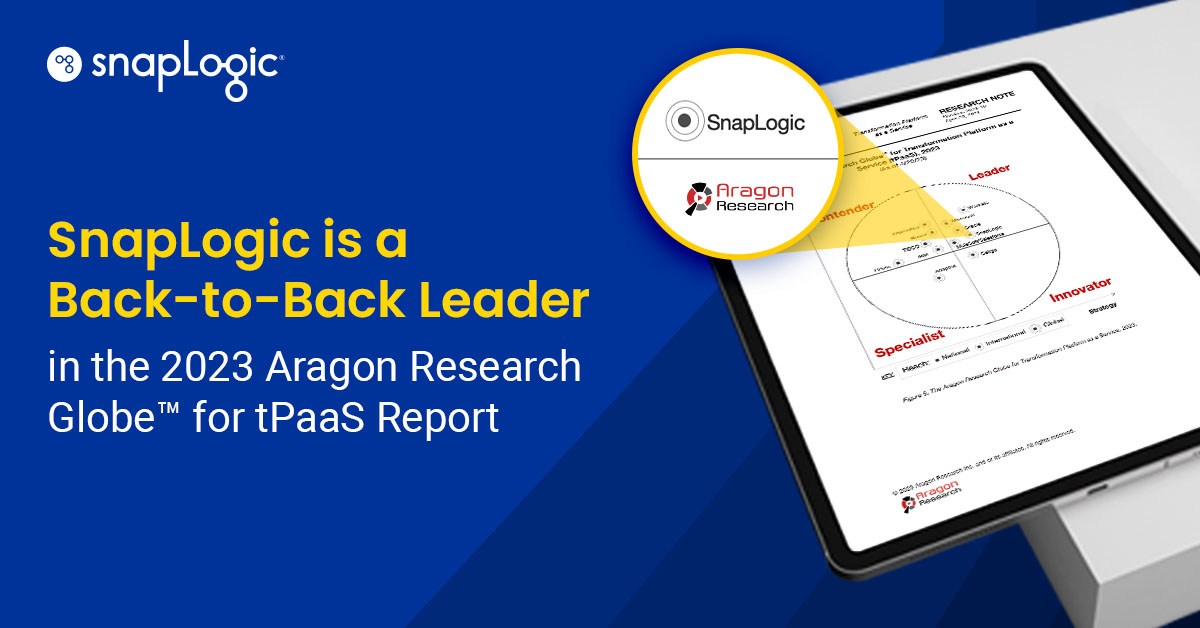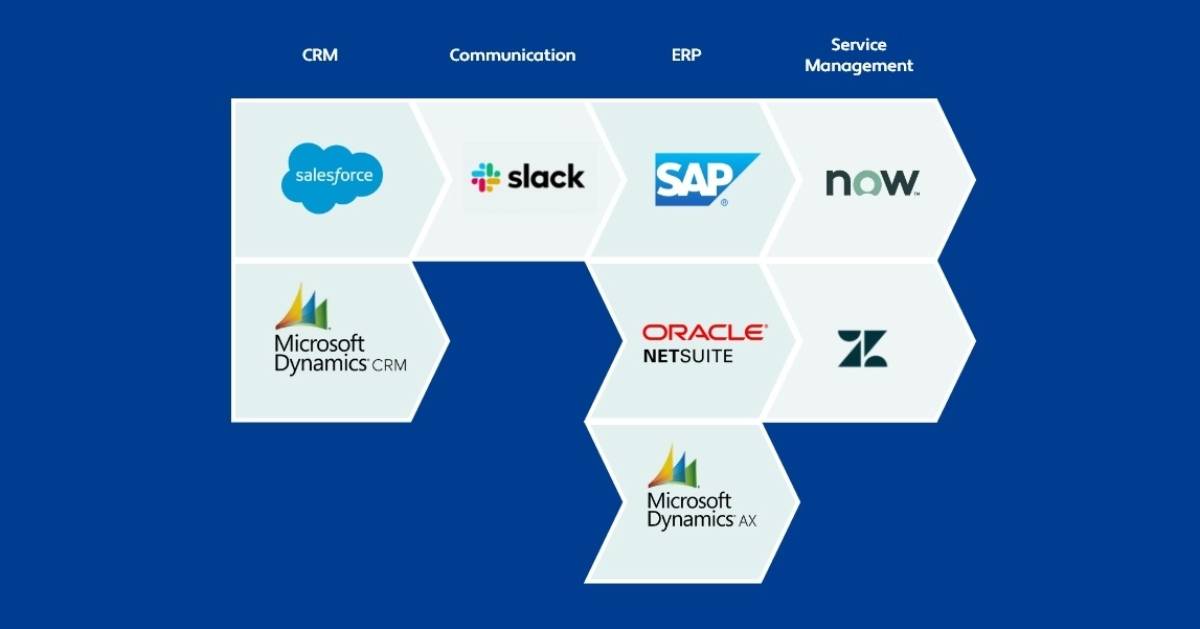Each team in an average organization uses anywhere between 39 and 78 apps from different software providers.
In most cases, you will want data to flow between these apps. For example, you want leads from your website to get to your marketing automation tool and then to your CRM. In some cases, apps come with built-in integration. If the built-in integrations are missing, you have to build custom integrations or use manual processes. If your team uses 40 or more apps, and you need to create automated workflows that carry data from one app to the other, you need an integration platform.
iPaaS helps all types of apps connect to each other — regardless of whether they have built-in integrations — exchange data, and automate data pipelines and workflows in your organization.
What is iPaaS?
iPaaS (Integration Platform as a Service) is a suite of cloud services enabling the development, execution, and governance of application integration, API management, and data integration with the goal of integrating both on-premises and cloud-based systems, services, cloud applications, on-premises apps, and other data sources. These services are typically designed with low-code visual interfaces and templates. And unlike Enterprise Service Bus (ESB) of the past, they are built on a cloud-based infrastructure such as AWS, Azure, and Google Cloud to serve as a platform for the automation of workflows and to share data between all applications and data sources both within an organization as well as outside.
Organizations can use iPaaS to integrate the technology across their whole software ecosystem.

Let’s say you want to take data from your ERP, marketing applications, and CRM, prepare it for analysis, and send it to a business intelligence platform. It is a pretty standard business process that organizations use to gain insights into user behavior related to their marketing campaigns. Without an integration platform, you will have to create manual integrations between all the systems involved. With the help of iPaaS, business users will use pre-built connectors and create the entire workflow themselves.
What is iPaaS vs SaaS?
iPaaS is a cloud-based integration solution, unlike SaaS (Software as a Service) which is simply a way of delivering software over the internet. Other categories of cloud-based computing include infrastructure as a service (IaaS) and platform as a service (PaaS).
Most popular iPaaS use cases
Organizations use integration platforms for three major use cases:
- Application Integration: To integrate processes and applications so that two or more applications can talk to each other within a software ecosystem
- API Management and Development: To design, manage, and govern APIs at scale
- Data Integration: To fill up data in data lakes through extraction, transformation, and loading (ETL). And to manage data warehouses and the analytics stack through both ETL, and extraction, loading, and transformation (ELT) processes
What are the benefits of iPaaS?
Integration platforms gather data from all sources, which helps to reduce information silos. If you use a data warehouse or multiple data lakes, integration platforms help improve data accuracy because they make it easier to include data from all sources. If a customer interacts with the support team about an issue, and you only analyze data about their interaction with the sales or marketing team, you are not getting the complete picture. Data gathered from all sources results in more accurate analysis. Besides removing data silos, iPaaS gives you three major benefits:
1. iPaaS makes it easier to add and remove applications as needed
Without iPaaS, organizations may settle for using dated apps because it would be too much of a hassle to create custom integrations and workflows for a new tool. As a result, iPaaS tools are key enablers for digital transformation.
With an integration platform, you can easily migrate data and processes from one application to another. This means you won’t have to worry about the new app working with the rest of your technology stack, and you will be able to upgrade and scale as needed. According to a market study, 78 percent of companies mention the “seamless addition of new integrations” as a major benefit of using iPaaS. So using iPaaS gives you the ability to add or remove applications and processes as needed without having to worry about integration and accelerate digital transformation in your organization.
2. iPaaS helps you save time through automation
If you don’t use iPaaS, you’ll need to create custom integrations between applications — which takes a lot of time.
- You will have to bring in a developer.
- After gaining a thorough understanding of both applications and their APIs, the developer will need to build connectors that leverages those API and build an integration that connects the two systems.
- If you have to do that for multiple apps and processes, you will end up with a lot of custom code.
Building custom integrations and workflows without iPaaS is a big resource drain.
iPaaS platforms offer a user-friendly interface where users with basic technical knowledge can create automations using drag-and-drop tools. Modern iPaaS tools such as SnapLogic, further empower non-technical users with self-service by providing code-free way to read/write and transform data. For example, here’s how you can automate your employee onboarding process with SnapLogic:
3. iPaaS strengthens data governance
With iPaaS, you have complete control over the data pipeline and know exactly where each data set resides at every stage. This control helps you comply with internal and external data governance requirements. For example, if a rule states you have to delete user data after 12 months of no contact, with iPaaS you will know exactly which physical devices and cloud-based servers hold the data and its backup, and you will be able to delete it with complete accuracy. Data management becomes easier with increased control and visibility over every data point.
How does iPaaS work?
iPaaS platforms come with custom development kits and data connectors so that the IT team can integrate different apps with little to no development work.
Once you log in, you gain access to a dashboard, an integration designer, and other features such as a manager to manage integration assets and schedules. Different vendors may have different names for these features, but they give you the ability to drag and drop data connectors and build custom integrations.

Integration platforms provide broad functionality and can handle and monitor large amounts of data in real-time. They drive the ETL process of data by fetching data from the point of creation and taking it to the relevant app, as per the defined flow.
iPaaS platforms support both cloud-based and on-premises databases and applications. They do that by supporting:
- All major API protocols: REST, SOAP, GraphQL, etc.
- All major file transfer protocols: HTTP, FTP, SFTP,
- All major file formats: XML, JSON, Parquet, etc.
- All major file storage systems: S3, WASB, and WASBS, etc.
By supporting a wide variety of protocols and data formats, they can send and receive data to and from any application or database.
What’s the cost of an iPaaS?
The cost and pricing of an iPaaS can vary based on the complexity of your integration needs. If you’re looking to compare iPaaS vendors and options, skip to the section, “Which is the best iPaaS?”
The hidden cost of point-to-point integration tools
Organizations in the U.S. and U.K. lose roughly $140 billion each year as a result of disconnected data, according to Vanson Bourne, an independent research firm. Among other things, these costs stem from wasted time and resources. Seasoned programmers, engineers, and data architects devote considerable energy – too much, frankly – to integrating disconnected data for their organizations.
Another study by Vanson Bourne reveals that IT decision-makers spend 20 percent of their time manipulating and preparing data for use. This includes low-level tasks like manually integrating datasets, applications, and systems. What’s more, research shows that a whopping 90 percent of employees – among a group of 500 IT decision-makers and business stakeholders – are burdened by repetitive tasks that could easily be automated. Again, many such tasks deal with arduous, code-heavy integrations.
Point-to-point integration tools quickly become inadequate for growing organizations and their need to build full enterprise integration.
If you only use a few vendor-provided integration tools (such as Salesforce, Marketo, Slack, and other saas applications), then you can manage them with relative ease. But if you acquire enough of them, they become like a deeply entangled knot that’s nearly impossible to untie. While point-to-point tools might be more efficient than legacy systems, they simply can’t scale to the number of integrations or volume of data modern organizations need.
Perhaps one of the most broken approaches to integration is that of building custom integration flows, workflows, data flow, or data pipelines through coding. In this setting, integration specialists must continually construct, maintain, fix, modify, and re-build connections between different endpoints, especially since many SaaS applications are regularly updated. This process is highly inefficient and lacks scalability.
Which are the best iPaaS vendors?
While selecting the best iPaaS vendor (not to be confused with a Middleware vendor) for your organization might be based on your budget, needs, and requirements, there are third-party firms that take the time every year to interview and assess the top vendors in the market. Each year, the global research firm Gartner assesses the top 17 providers to help software engineering leaders select an Enterprise Integration Platform as a Service (EiPaaS) solution that best suits their needs. Vendors that are typically found in the Gartner Magic Quadrant (Gartner MQ) for iPaaS are:
- SnapLogic
- IBM
- Boomi
- Informatica
- Mulesoft
- Workato
- SAP
- Jitterbit
- Tray.io
- Tibco
- Oracle
If you’re looking for reviews and ratings on iPaaS vendors, check out Gartner Peer Insights for real customer feedback.
Integrate apps and create automations with iPaaS
Every organization needs process automation and data integration. HR, marketing, sales, finance, and DevOps teams need multiple apps to talk to each other for their internal processes, and the data team needs data from different apps in the organization for analysis. With iPaaS, creating such workflows and integrations is easier and faster.
An iPaaS allows you to bring data from multiple sources on a single platform, transform it for your business intelligence software and analyze it to gain accurate results. SnapLogic offers a low-code/no-code iPaaS solution to help you connect your applications and create automated workflows. Find more information about the integration platform here.











